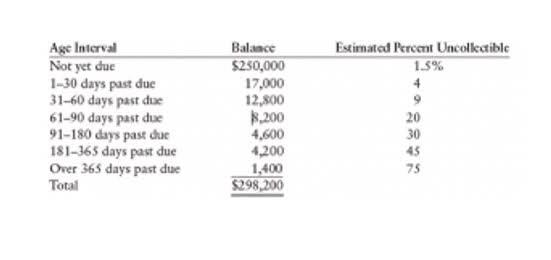
One of the key strategies for companies to manage contra expenses efficiently involves conducting regular evaluations to identify areas where cost savings can be made and adjusting spending accordingly. By closely monitoring contra expenses and comparing them against budgeted projections, organizations can pinpoint inefficiencies and implement necessary changes to improve their financial performance. By properly accounting for contra expenses, businesses can present a more holistic view of their financial performance, leading to informed decision-making and strategic planning. This practice not only helps in better decision-making but also aids in complying with accounting standards by accurately representing expenses related to revenue generation.
Example #1: Revenue Contra Account

From its purpose in financial reporting to the types of accounts it encompasses, there is much contra expense to explore. They are expenses that are offset against revenue, reducing the total amount of income reported on a company’s financial statement. Contra expense accounts are rarely used, because organizations find it to be easier to record third-party payments directly against an expense account. However, these accounts are still useful when dealing with large quantities of reimbursements, where it is cleaner and less confusing to store the information in a separate account. Thus, the use of a separate contra expense account makes it easier to monitor the flow of expenses and reimbursements. As a reminder, assets and expenses are debit accounts whereas liabilities and revenues are credit accounts.
contra expense account

For example, a company pays for medical insurance on behalf of its employees, which it records in an employee benefits expense account. Then, when the employee-paid portion of the expense is paid to the company by employees, these reimbursements are recorded in a benefits contra expense account. The net effect of the two accounts is a reduced total benefits expense for the company. Proper implementation of contra-expense accounts will not only streamline your financial processes but also enhance the accuracy and reliability of your financial reporting. This, in turn, can lead to more effective business strategies and potentially improved financial outcomes.
- By closely monitoring contra expenses and comparing them against budgeted projections, organizations can pinpoint inefficiencies and implement necessary changes to improve their financial performance.
- Then in account 4211 they can see the portion of the cost that was paid by the employees.
- Contra equity is a general ledger account with a debit balance that reduces the normal credit balance of a standard equity account to present the net value of equity in a company’s financial statements.
- It is used when a company initially pays for an expense item and is then reimbursed by a third party.
- Contra expense accounts come in various forms, each serving a unique purpose in financial accounting.
- Both contra expenses and contra revenues play crucial roles in ensuring financial statements reflect economic reality.
- The presence of contra expense accounts significantly influences the presentation and interpretation of financial statements.
Examples of Contra Expense Accounts
These contra expense accounts play a crucial role in accounting by allowing businesses to offset specific expenses directly against related revenues. By doing so, companies can provide a more accurate representation of their financial performance and ensure that expenses are appropriately matched with the revenues they adjusting entries generate. This matching principle helps in presenting a clearer and more transparent view of the business’s financial health.
Why Use a Contra Account?

Furthermore, these accounts play a crucial role in preventing double-counting of expenses, such as in cases where refunds or discounts have been applied to previously recorded expenditures. Therefore, to ensure accounts receivable stays clean and transparent, CCC will record $2,500 in the contra asset account called “Allowance for Doubtful Accounts”. The contra accounts will be grouped in the same category on the balance sheet or income statement as their related accounts. Generally speaking, the use of contra accounts is to ensure their related accounts stay clean and to keep track of historical cost easier.
Contra Accounts: Explained, Popular Types and Examples
- This entry records the payment of the invoice, the cash disbursed, and the discount taken in the contra account.
- They not only help in maintaining transparency but also ensure that financial statements reflect true operational efficiency.
- Contra expenses help in offsetting regular expenses, which in turn streamlines the expense recognition process.
- They provide a valuable tool for maintaining precise financial records, which is essential for informed decision-making and regulatory compliance.
- This expertise will serve as a foundation for more informed decision-making and improved financial management.
- Accurate revenue reporting ensures compliance with accounting standards like GAAP and IFRS, offering a realistic view of the company’s revenue-generating capabilities.
This mechanism ensures that your financial statements provide a precise representation of your business’s financial position. Failure to record these transactions can result in misleading financial statements and can affect the company’s profitability and financial health. Consulting financial experts is crucial for gaining a deeper understanding of how to effectively manage contra expenses within a business. By receiving guidance from professionals, one can navigate complex contra account scenarios with confidence and accuracy.
Definition of Contra Expense Account
For liability and revenue accounts, credit transactions will increase and debit transactions will decrease the account balances. Contra expenses are essentially deductions or reductions from regular expenses, recorded separately to highlight their unique nature. They are used to offset and reduce the impact of related expenses, providing a clearer picture of the company’s financial position. In the world of finance, this term carries significant weight in the realm Bookkeeping for Painters of accounting.
This entry was posted on Lunes, agosto 9th, 2021 at 10:15 am
You can follow any responses to this entry through the RSS 2.0 feed.
Posted in: Bookkeeping
